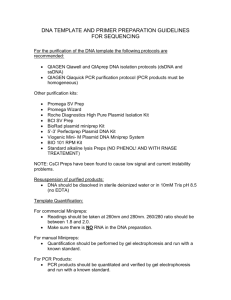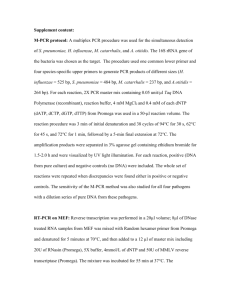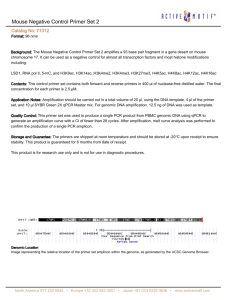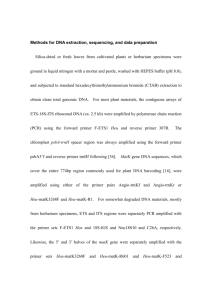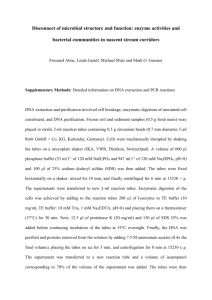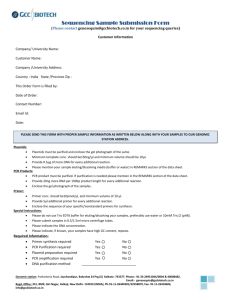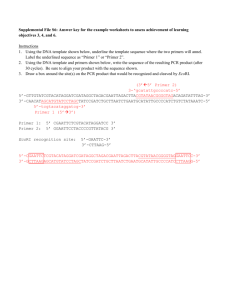Isolation and characterization of 13 microsatellite loci in
advertisement
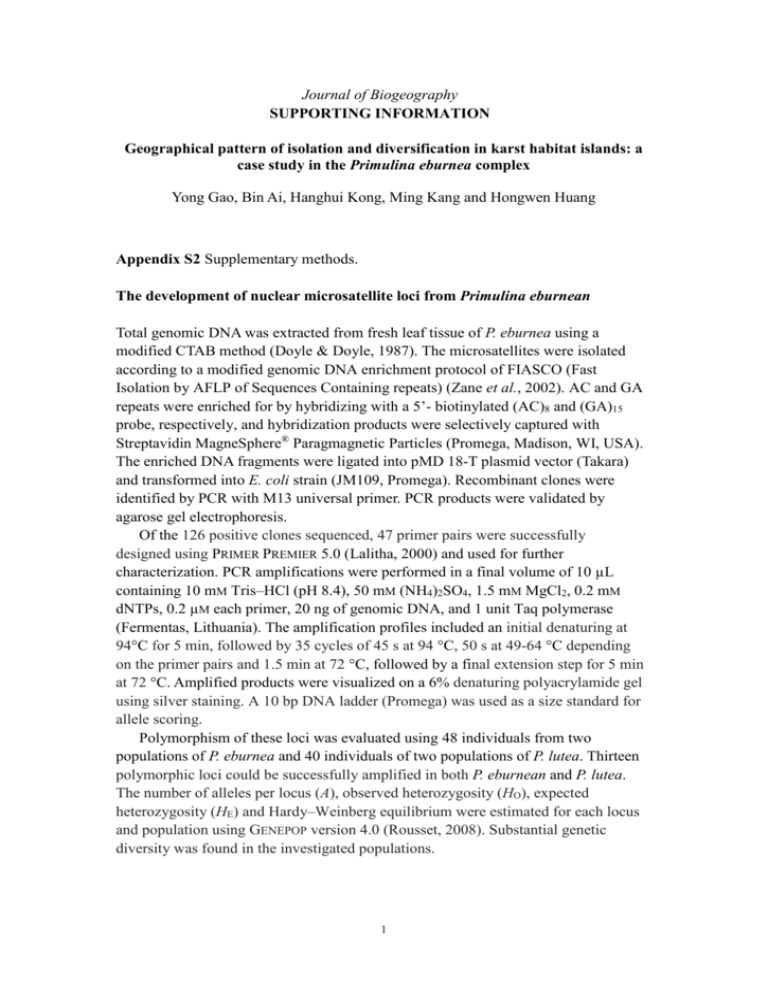
Journal of Biogeography SUPPORTING INFORMATION Geographical pattern of isolation and diversification in karst habitat islands: a case study in the Primulina eburnea complex Yong Gao, Bin Ai, Hanghui Kong, Ming Kang and Hongwen Huang Appendix S2 Supplementary methods. The development of nuclear microsatellite loci from Primulina eburnean Total genomic DNA was extracted from fresh leaf tissue of P. eburnea using a modified CTAB method (Doyle & Doyle, 1987). The microsatellites were isolated according to a modified genomic DNA enrichment protocol of FIASCO (Fast Isolation by AFLP of Sequences Containing repeats) (Zane et al., 2002). AC and GA repeats were enriched for by hybridizing with a 5’- biotinylated (AC)8 and (GA)15 probe, respectively, and hybridization products were selectively captured with Streptavidin MagneSphere® Paragmagnetic Particles (Promega, Madison, WI, USA). The enriched DNA fragments were ligated into pMD 18-T plasmid vector (Takara) and transformed into E. coli strain (JM109, Promega). Recombinant clones were identified by PCR with M13 universal primer. PCR products were validated by agarose gel electrophoresis. Of the 126 positive clones sequenced, 47 primer pairs were successfully designed using PRIMER PREMIER 5.0 (Lalitha, 2000) and used for further characterization. PCR amplifications were performed in a final volume of 10 µL containing 10 mM Tris–HCl (pH 8.4), 50 mM (NH4)2SO4, 1.5 mM MgCl2, 0.2 mM dNTPs, 0.2 µM each primer, 20 ng of genomic DNA, and 1 unit Taq polymerase (Fermentas, Lithuania). The amplification profiles included an initial denaturing at 94°C for 5 min, followed by 35 cycles of 45 s at 94 °C, 50 s at 49-64 °C depending on the primer pairs and 1.5 min at 72 °C, followed by a final extension step for 5 min at 72 °C. Amplified products were visualized on a 6% denaturing polyacrylamide gel using silver staining. A 10 bp DNA ladder (Promega) was used as a size standard for allele scoring. Polymorphism of these loci was evaluated using 48 individuals from two populations of P. eburnea and 40 individuals of two populations of P. lutea. Thirteen polymorphic loci could be successfully amplified in both P. eburnean and P. lutea. The number of alleles per locus (A), observed heterozygosity (HO), expected heterozygosity (HE) and Hardy–Weinberg equilibrium were estimated for each locus and population using GENEPOP version 4.0 (Rousset, 2008). Substantial genetic diversity was found in the investigated populations. 1 REFERENCES Doyle, J. & Doyle, J. (1987) A rapid DNA isolation procedure for small quantities of fresh leaf tissue. Phytochemical Bulletin, 19, 11-15. Lalitha, S. (2000) Primer Premier 5. Biotech Software and Internet Report, 1, 270-272. Rousset, F. (2008) GENEPOP’007: a complete re-implementation of the genepop software for Windows and Linux. Molecular Ecology Resources, 8, 103-106. Zane, L., Bargelloni, L. & Patarnello, T. (2002) Strategies for microsatellite isolation: a review. Molecular Ecology, 11, 1-16. 2


